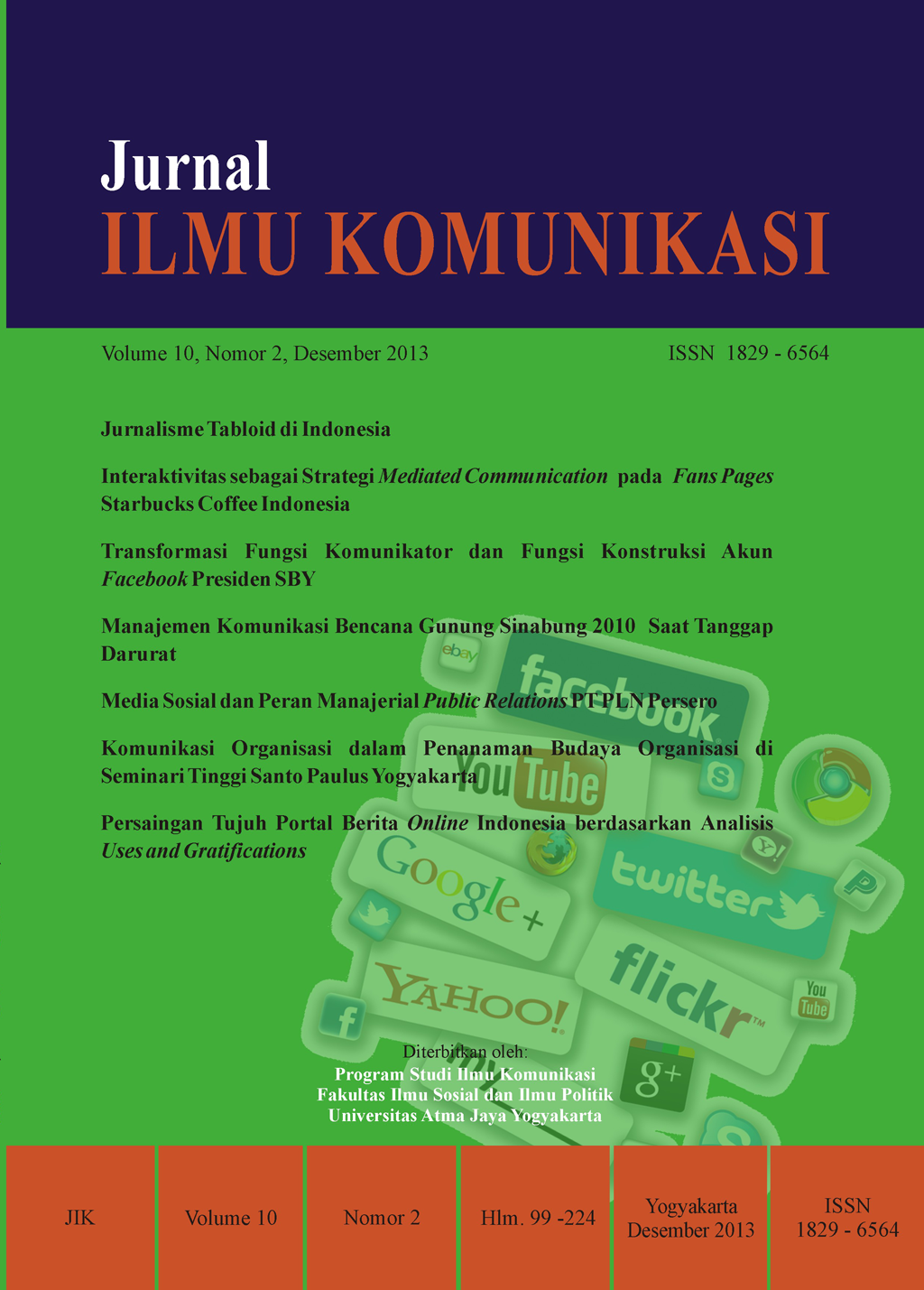Persaingan Tujuh Portal Berita Online Indonesia berdasarkan Analisis Uses and Gratifications
DOI:
https://doi.org/10.24002/jik.v10i2.353Abstract
Abstract: The development of internet technology in journalism has spawned online news portals. The presence of this new media is in line with the increasingly dynamic audience in information searching in mass media. The population growth of online news portals in Indonesia increases the competition amongs the providers. This competition leads portals to improve their service to win audience’s choice. This study examines the competition based on the audience’s satisfaction to information provided by the portals. A Uses and Gratifications model is used to measure audience’s motives and gratifications.Abstrak: Portal berita online menjadi satu produk dari perkembangan teknologi internet di dunia jurnalisme. Kemunculan media baru ini sejalan dengan perkembangan audiens yang semakin dinamis dalam mencari informasi di media massa. Populasi portal berita online di Indonesia yang terus tumbuh membuat persaingan industri portal berita online menjadi ketat. Media online berupaya merebut hati pembacanya dengan menyajikan informasi yang mampu menjawab kebutuhan audiens. Kepuasan audiens akan sajian informasi yang ditawarkan oleh portal berita online menjadi dasar penelitian untuk melihat tingkat persaingan yang terjadi. Teori uses and gratifications digunakan penulis untuk melihat motif dan kepuasan audiens dalam mengakses portal berita online
Downloads
Published
How to Cite
Issue
Section
License
Jurnal ILMU KOMUNIKASI is an academic journal. As such, it is dedicated to the open exchange of information. For this reason, JIK is freely available to individuals and institutions. Authors who publish in Jurnal ILMU KOMUNIKASI will release their articles under the Creative Commons Attribution (BY) License. This license allows anyone to copy and redistribute the article in any medium or format as well as remix, transform, and build upon the material for any purpose, even commercially as long as they credit the authors for the original creation. For details of the rights authors grants users of their work, see the "human-readable summary" of the license, with a link to the full license. (Note that "you" refers to a user, not an author, in the summary)
 This work is licensed under a Creative Commons Attribution 4.0 International License.
This work is licensed under a Creative Commons Attribution 4.0 International License.














